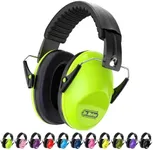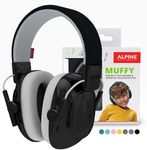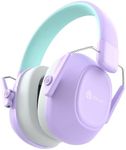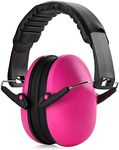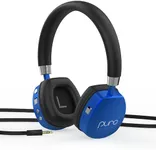Buying Guide for the Best Noise Cancelling Headphones For Children
Choosing noise-cancelling headphones for children is all about balancing comfort, safety, and effectiveness. Kids have different needs than adults, so it's important to focus on features that protect their hearing, fit their smaller heads, and are easy for them to use. Start by thinking about where and how your child will use the headphones—whether it's for travel, studying, or just enjoying music at home. Prioritize headphones that are designed specifically for children, as these will usually have built-in safeguards and a more suitable fit.Active Noise Cancellation (ANC)Active Noise Cancellation is a technology that uses microphones and speakers to reduce unwanted background noise. This is important for children because it can help them focus in noisy environments or protect their ears from loud sounds. ANC headphones come in different strengths: some block out a lot of noise, while others only reduce it slightly. For children, it's best to choose a model with gentle noise cancellation—enough to make things quieter, but not so much that they can't hear important sounds like voices or alarms. Think about where your child will use the headphones: for travel or very noisy places, stronger ANC might be helpful, but for everyday use, moderate ANC is usually safer.
Volume LimitingVolume limiting is a feature that restricts how loud the headphones can get, usually capping the maximum volume at a safe level for children's ears. This is crucial because children's hearing is more sensitive and can be damaged by loud sounds. Most kids' headphones limit the volume to around 85 decibels, which is considered safe for extended listening. Always check that the headphones have a reliable volume limiter, and avoid models that allow the limit to be easily bypassed. If your child will use the headphones for long periods, this feature is especially important.
Fit and ComfortFit and comfort refer to how well the headphones sit on a child's head and how comfortable they are to wear for long periods. Children's headphones should have adjustable headbands and cushioned ear pads to ensure a snug but gentle fit. If the headphones are too tight, they can cause discomfort; if they're too loose, they might not work well or could fall off easily. Look for lightweight designs and materials that won't irritate your child's skin. If your child will wear the headphones for travel or study sessions, comfort becomes even more important.
Durability and Build QualityDurability and build quality describe how well the headphones can withstand drops, bends, and everyday use. Kids can be rough on their belongings, so it's important to choose headphones made from sturdy materials with reinforced cables and joints. Some models are designed to be bendable or have detachable parts to prevent breakage. If your child is very active or tends to be tough on their things, prioritize headphones that are specifically marketed as durable or kid-proof.
Wired vs. WirelessWired headphones connect directly to a device with a cable, while wireless headphones use Bluetooth or other wireless technology. Wired headphones don't need charging and are often simpler to use, but the cable can get tangled or damaged. Wireless headphones offer more freedom of movement and are great for travel, but they need to be charged regularly. For younger children, wired headphones might be easier to manage, while older kids may appreciate the convenience of wireless models. Consider your child's age, how responsible they are with charging devices, and where they'll use the headphones most.
Ease of Use and ControlsEase of use and controls refer to how simple it is for a child to operate the headphones, such as adjusting the volume, turning noise cancellation on or off, or answering calls. Look for headphones with large, clearly marked buttons or switches that are easy for small hands to use. Complicated controls can be frustrating for kids and may lead to accidental changes in settings. If your child will use the headphones independently, make sure they can easily understand and use all the features.
